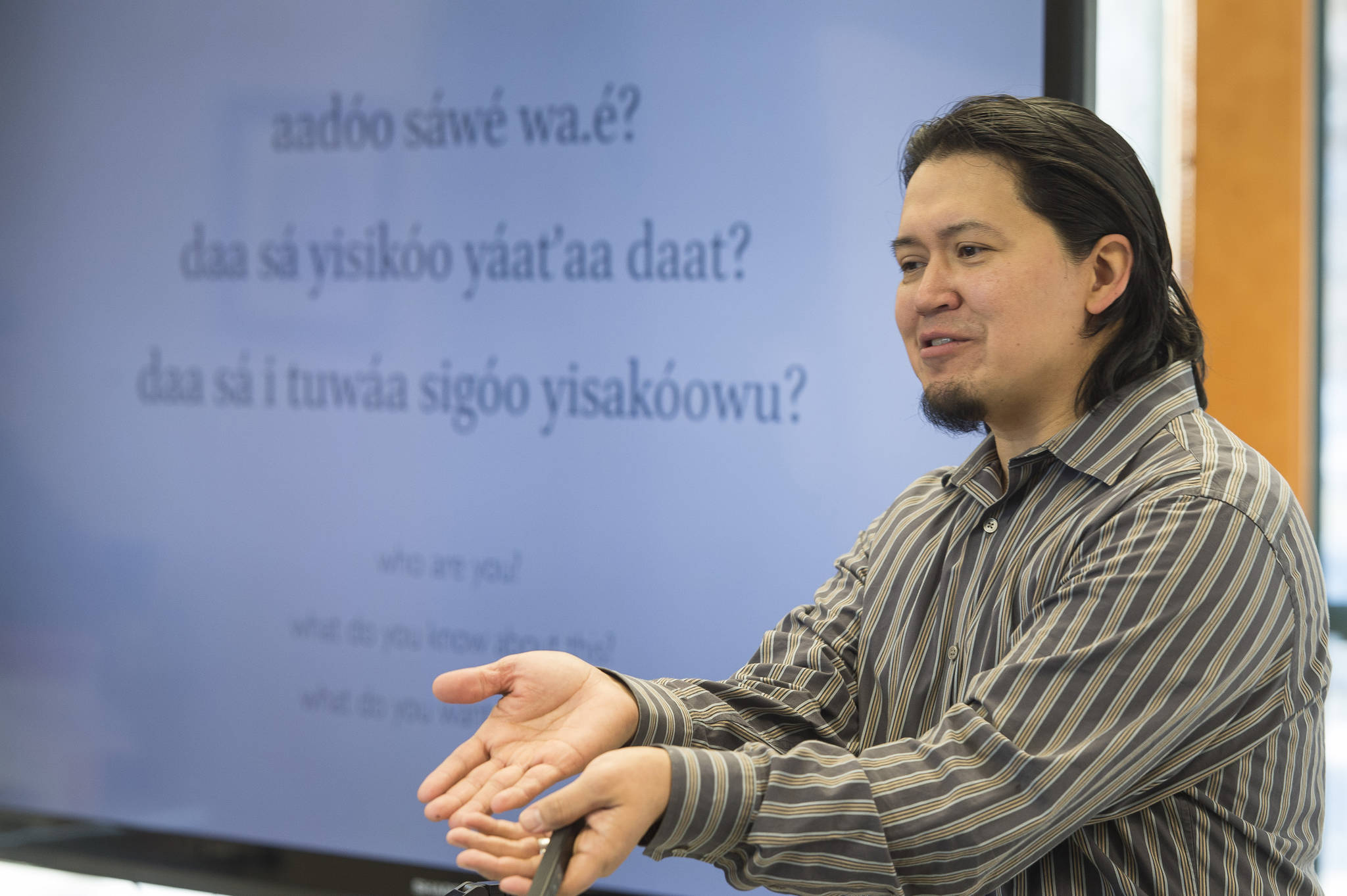Northwest Coast Art is an easily distinguished and recognizable art form, and formline is its foundation, seen on cultural objects from blankets to screens. So what is formline and how does it work?
Professor of Alaska Native Languages and Tlingit formline artist Xh’unei Lance Twitchell answered these questions at the Art of Place series on Friday, Feb. 9 at the University of Alaska Southeast. Twitchell led a small workshop on formline, alternating between discussing the basics of the art form to having participants practice. The participants themselves came from a variety of backgrounds. Some wanted to learn more about their heritage. Others, wanted to learn more about the art of this place where they now live.
“We had to manufacture a word in Tlingit for ‘art’ and for ‘artwork’ and for ‘artists’ — because those words didn’t really exist, because everything that was made was made with things on it. These were just the daily-life things. It wasn’t a mass-manufacturing culture. It was a culture where everything that was made was made with tremendous care,” Twitchell said.
According to the Sealaska Heritage Curriculum “Northwest Coast Formline Design,” formline is a Tlingit, Haida and Tsimshian design style, which can tell stories, like of historic events. It often features animals and supernatural beings in abstract form, as well as other images. Formline seeks balance and symmetry. There are three primary colors used: red, black, and a blueish green. Formline is two dimensional when on objects like bentwood boxes and clan hats, but can also be adapted for totem poles and masks.
For the workshop, Twitchell focused on two-dimensional art, specifically when it comes to drawing designs. He showed common shapes that occur in formline, like ovoids, and recommended books by Bill Holm to learn more. To draw formline shapes, you must first understand the form of your body. Twitchell demonstrated how the wrist, elbow and shoulder all have a range of motion and have differing levels of ability to capture detail. He also discussed what materials to use and how to care for them. He recommended those that wish to pursue formline to set aside time and space to practice.
“One of the things we should know about formline design and Northwest Coast Art is you can’t just do whatever you want,” Twitchell said, explaining that “clans claim things.” When an artist wants to draw something claimed by a clan, they should seek permission from the clan. To be a responsible formline artist, it is important to be “culturally informed and culturally fluent” to distinguish between what is and isn’t culturally appropriate, he said.
Twitchell explained that long ago if someone wanted art done they would approach an artist from the opposite clan to make it.
“The artist knows a lot of things. Someone might say, make us a bear; you got to know some things,” Twitchell said, explaining that different clans have different bears and as a formline artist a person would need to understand that difference.
Formline artists also did not just sit down and begin right away; instead, they’d fast until the design came to them, he said.
“This is a fundamental principle in our stories and in our artwork: there’s a spirit in everything. … One of the things you’re trying to do as an artist is figure out how to create something that captures that, Twitchell said. “There was a process where they were communicating with the spiritual world. That is a serious part of formline design. No matter what you believe, you can tap into those types of things: getting out on the land, listening to what’s there. I think in the Western world we get convinced that we’ve got all the books; we got everything. That people just know and then you go and talk to other people who fill you up with knowledge. But from an indigenous perspective, you just go sit by the running water and listen for a while. You just observe the world around you and your ancestors will come and sometimes show you certain things. It can get really vague but I do believe making this art is a part of that.”
There’s a lot to know about formline, from its history to the technique. There will be more opportunities to learn about it in Juneau. Twitchell said Metlakatla artist David R. Boxley will teach a workshop in this summer on formline, and there will be formline classes at UAS in the future.
• Clara Miller is the staff writer for the Capital City Weekly.

